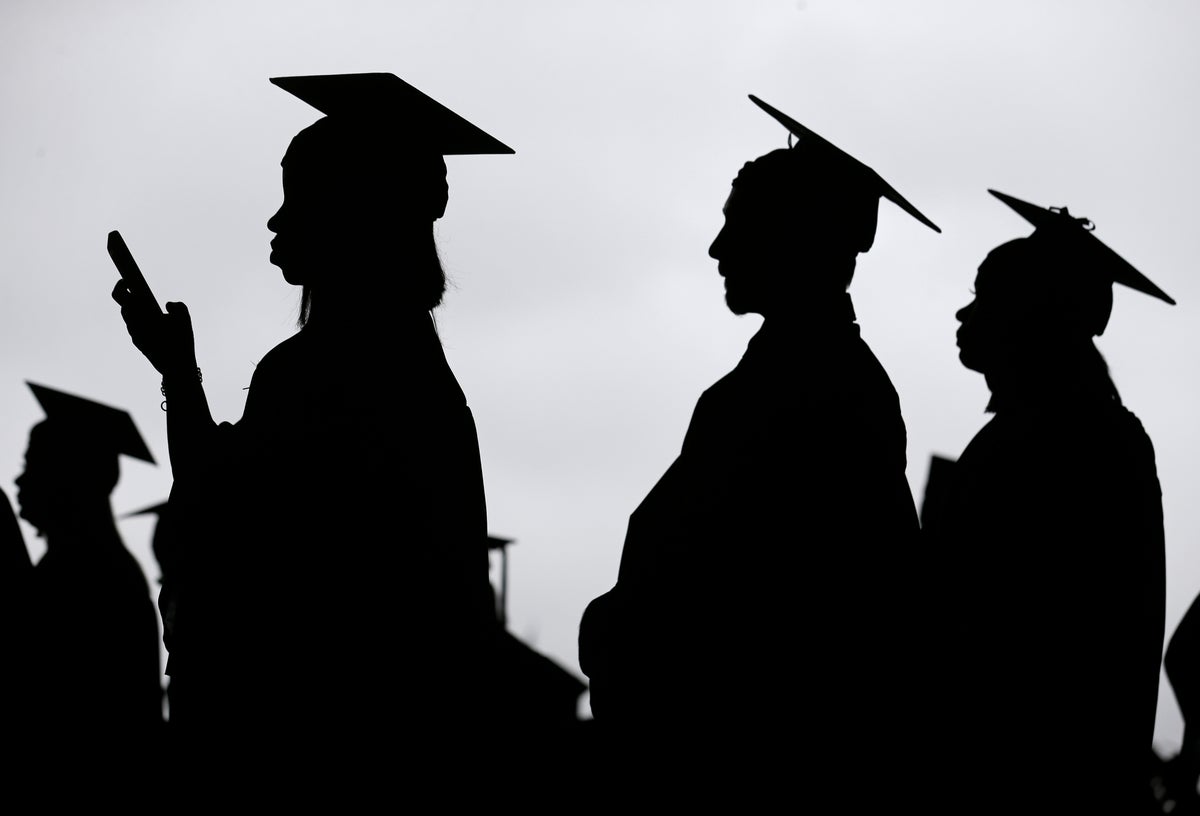
When Melissa Martinez applied to have her student loan debt forgiven more than a decade ago, the U.S. Department of Education told her she was ineligible.
Martinez, a professor, tried again this past year and managed to erase the last $6,000 she owed for her doctorate. She wasn’t alone — according to new federal figures, more than 145,000 borrowers have had the remainder of their federal student loan debt canceled through a program for people who work for schools, governments or nonprofits.
Hundreds of thousands more have completed the paperwork for the Public Service Loan Forgiveness program, and officials say many more likely qualify. An Oct. 31 deadline to apply under the less stringent rules is fast approaching.
There’s a broader conversation underway in America about how to handle student loan debt. An estimated 43 million Americans carry student loans worth $1.6 trillion, according to federal figures. Federal student loan payments were paused during the coronavirus pandemic and will remain so until at least Aug. 31. President Joe Biden is expected to make some sort of announcement about student loan relief before then.
Nearly all of the cancellations through the Public Service Loan Forgiveness Program have come since last October, when the government temporarily relaxed the complex requirements. Before that, the program had rejected more than 90% of applicants, the Department of Education said in 2019.
“I thought maybe it would work now,” said Martinez, who graduated from the University of Texas, Austin in 2010 with a doctorate in educational administration.
Martinez said the money will go towards lowering credit card debt and building savings to have on hand for emergencies and unexpected expenses.
“Knowing that it’s forgiven lifts some of the worry or stress off my shoulders,” she said.
Even though the deadline is in October, Martinez advises people who may qualify for the loan forgiveness to apply as soon as possible. She found the process difficult to navigate, even with the relaxed rules. It took her five months to complete the paperwork and another three months to hear back from the program.
“I remember calling and staying on the line for an hour waiting,” she said. Martinez also initially had her proof of employment denied, though it was approved when she re-sent the documents.
The Public Service Loan Forgiveness program, launched in 2007 to steer more graduates to public service, cancels federal student loan debt after 10 years of public interest work, or 120 payments. Teachers, librarians, nurses, public interest lawyers, military members and other public workers all qualify, along with people who work for non-profits.
So far, the forgiveness totals almost $8.1 billion in federal loans, but that amount is just a fraction of the debt that could qualify. The average amount of debt forgiven through the program is $64,968.
“The program seems really simple — people commit ten years to serving their country and communities and the government promises to end their student debt,” said Kat Welbeck, Civil Rights Counsel at the Student Borrower Protection Center. “We’ve seen, throughout the 14 years, so many people set back by administrative hurdles and burdens, not knowing they had access to this program or being told they couldn’t get access even though they worked in qualified employment.”
Under the reformed rules, loan servicers count payments that had previously been deemed unacceptable, such as when borrowers mistakenly or unwittingly signed up for non-qualifying plans.
“I think it’s a great incentive, especially for teachers. So many are overworked and underpaid, and they’ve got those loans that they’re still working on,” Martinez said.
The waiver period has been life-changing for loan holders who’ve been able to receive credit toward forgiveness for years they’ve worked in public service after previously being rejected, Welbeck said, describing joyful tears as loan balances drop to zero.
“There are so many more people to reach,” Welbeck added. “And it’s only a year, so we’re operating with a sense of urgency.”
Martinez encourages others to apply during the waiver period, despite the frustration. She says it was worth the time and effort to get the balance of her student loan forgiven.
Borrowers who are currently jobless or not working in public service may still qualify for forgiveness, according to the Department of Education. And the months during the pandemic since March 2020 in which payments on federal loans have been paused count as credits towards the total number of payments required for the program.







